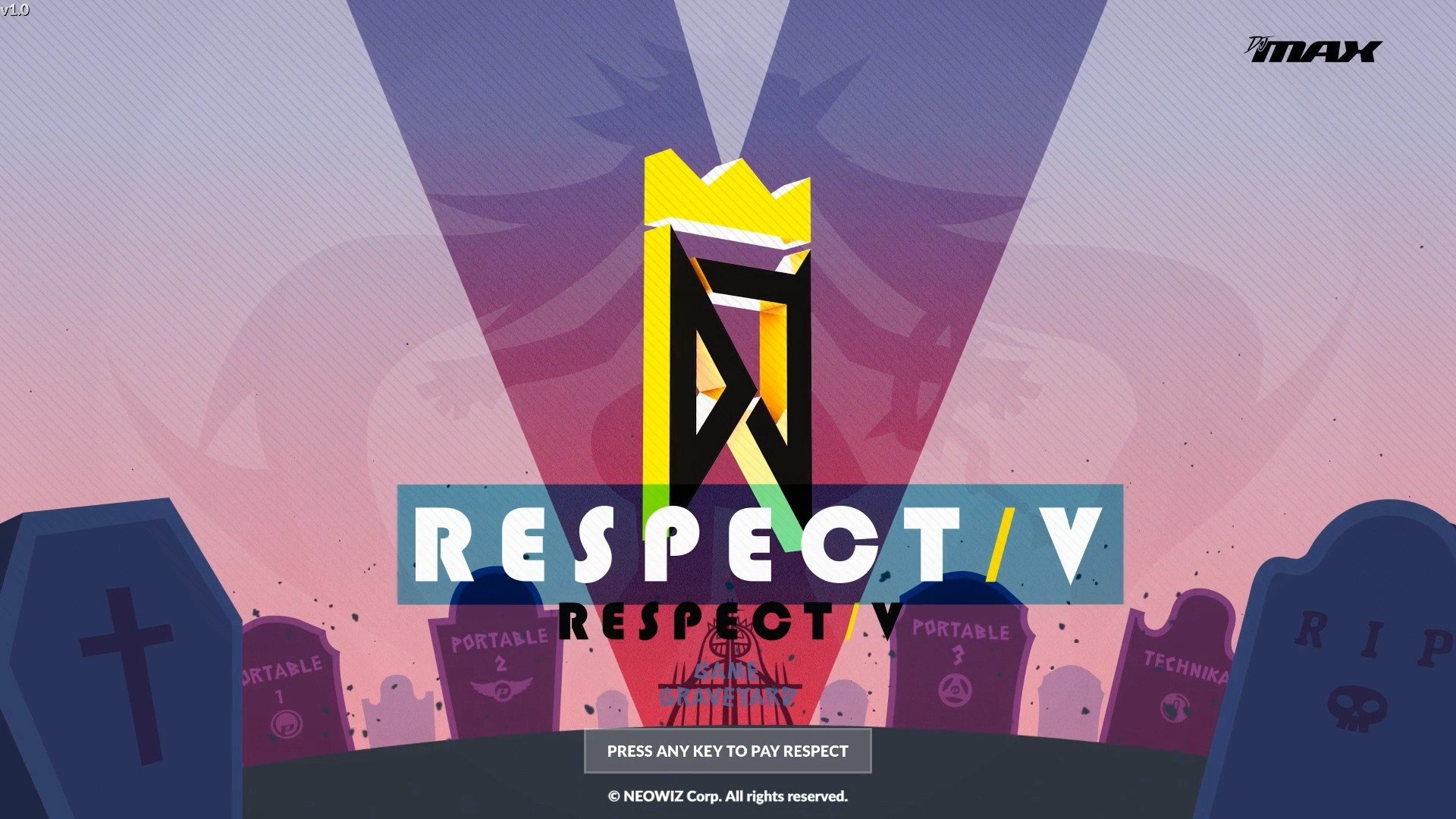
The DJMAX Chunithm game transcends traditional music rhythm games, immersing players in a captivating fusion of music, visuals, and gameplay. With its unique blend of DJMAX and Chunithm elements, this game offers an exciting experience unlike any other. From challenging rhythms to stunning visuals, players are taken on a musical journey that tests their skills and captivates their senses. In this comprehensive guide, we will delve into the world of DJMAX Chunithm, exploring its gameplay mechanics, music selection, and tips for mastering the game. Welcome to the ultimate resource for all things DJMAX Chunithm.
Play DJMAX RESPECT V today!
Understanding DJMAX Chunithm Game

The Concept Behind Chunithm
The concept behind the DJMAX Chunithm game is to create a harmonious blend of music, rhythm, and strategy, targeting players who enjoy a dynamic and interactive musical experience. This game takes inspiration from arcade classics but elevates the experience with modern technology and creative game design. The central idea is to involve players in the music-making process, allowing them to feel like an active participant in the tunes they love. With DJMAX's rich musical heritage combined with the innovative touch-based gameplay of Chunithm, players get to engage with music in a fresh and exciting way. The game creates a sense of immersion that goes beyond just hitting notes on time; it's about expressing oneself through rhythm and music, making each play session unique.
History of DJMAX Chunithm
The DJMAX Chunithm game is the result of a collaboration that marries the best of two worlds in rhythm gaming. DJMAX, a series known for its wide variety of music and challenging gameplay, originated in South Korea and quickly gained popularity across Asia for its depth and quality. On the other hand, Chunithm emerged from Japan, bringing with it an innovative arcade experience that utilised touch and motion controls.
The fusion of these two games into DJMAX Chunithm represents a significant milestone in music rhythm game history. It has managed to merge DJMAX's extensive music library and complex note patterns with Chunithm's interactive and physical gameplay. The blending of these two distinct gaming experiences offers a novel approach to rhythm gaming that appeals to fans of both franchises and newcomers alike, setting a new standard for what can be expected from the genre.
Unique Aspects of DJMAX Chunithm
The DJMAX Chunithm game differentiates itself with several unique aspects that set it apart from other titles in the rhythm game genre. One standout feature is the game's intuitive touch-based controls, which allow players to interact with the music in a tactile and engaging manner. This not only enhances the immersion but also provides a more accessible entry point for players new to rhythm games.
Additionally, the game's visual aesthetic is another distinctive characteristic. It combines the vibrant and futuristic art styles of DJMAX with the whimsical and colourful presentation of Chunithm, resulting in a visual feast that complements the auditory experience.
Moreover, DJMAX Chunithm brings a diverse range of music, including K-pop, J-pop, electronic, rock, and more, catering to various musical tastes and keeping the gameplay experience fresh and varied. This variety, combined with the game's unique gameplay mechanics, offers a rhythm gaming experience that is fresh, challenging, and deeply rewarding.
Gameplay and Mechanisms

Breaking Down the Gameplay
The gameplay of DJMAX Chunithm is a compelling mix of rhythm, timing, and coordination. As notes flow down the screen to a corresponding line, players must tap, hold, or slide on the control surface to the beat of the music. The objective is to perform these actions accurately as the notes intersect with the judgement line, which tests players' rhythmic precision.
The control surface itself is divided into different sections, and players will find themselves using the entire length of the panel to interact with the game. This physical aspect of gameplay makes DJMAX Chunithm not only a test of musical ability but also of players' dexterity and spatial awareness.
Furthermore, the difficulty of the game scales with the complexity of the music tracks, ranging from simple melodies for beginners to intricate compositions with rapid, complex note patterns for advanced players. This scaling ensures that the game remains challenging and enjoyable for players of all skill levels.
Rules and Scoring System
The rules of DJMAX Chunithm are straightforward yet require skill to master. Players score points by hitting notes with precise timing; the closer to perfect timing, the higher the score for each note. The game scores these hits in several categories, such as 'Perfect', 'Good', and 'Miss', with 'Perfect' hits scoring the most points. The game's scoring system emphasises accuracy and rhythm, rewarding players who can maintain a streak of perfect hits.
Combo multipliers also play a crucial role in boosting scores. As players hit consecutive notes correctly, they build up a combo, which increases the points gained per note. Missing a note breaks this combo, resetting the multiplier and reducing the potential high score.
Another critical aspect of the scoring system is the 'Fever' mode, which is activated after hitting a certain number of notes without missing. During 'Fever' mode, players can earn additional points, making it an essential part of achieving high scores.
Understanding and optimising performance within these rules is key to mastering DJMAX Chunithm and climbing the leaderboards.
Different Game Modes
DJMAX Chunithm caters to a variety of play styles by offering different game modes for players to enjoy. The primary mode is the 'Arcade Mode', which provides the classic experience where players select a track and aim for the highest score. For those looking to challenge themselves, 'Hard Mode' takes it up a notch with faster note speeds and more complex patterns.
For players interested in a less competitive environment, 'Casual Mode' offers a more relaxed experience with simpler note patterns and reduced difficulty. This mode allows players to enjoy the music and gameplay without the pressure of high scores.
Furthermore, DJMAX Chunithm includes a 'Multiplayer Mode' where friends can compete against each other in real-time, adding a social dynamic to the game. Lastly, 'Mission Mode' presents players with specific challenges to complete, such as hitting a certain number of perfect notes, adding another layer of depth to the gameplay.
Each mode is designed to provide a different facet of enjoyment, ensuring that there's something for every type of player in DJMAX Chunithm.
User Interface and Controls

Decoding the User Interface
The user interface (UI) of DJMAX Chunithm is designed to be intuitive, allowing players to easily navigate through the game's options and settings. The main screen displays a variety of information clearly, including song selection, difficulty levels, player scores, and progress statistics.
At the heart of the UI during gameplay is the 'note highway', a visual representation of the music where notes descend towards the judgement line. It is crucial for players to understand this area as it directly correlates with gameplay. The UI also prominently displays the current combo count and score, which are vital for tracking performance.
Additionally, the UI includes visual cues for the game's 'Fever' mode and other special mechanics, ensuring players are aware of these opportunities to maximise their scores. The overall design of the UI is sleek and unobtrusive, maintaining players' focus on the gameplay while providing all necessary information at a glance.
Understanding the UI is an essential component of mastering DJMAX Chunithm, as it allows players to fully immerse themselves in the rhythm game experience.
Control Mechanisms in DJMAX Chunithm
Control mechanisms in DJMAX Chunithm are a defining feature of the game, combining touch and motion inputs for an immersive experience. The game uses a touch-sensitive panel, where players interact with the notes by tapping, sliding, or holding their fingers on the surface in sync with the music. This panel detects the position and movement of the players' hands, translating their actions into gameplay.
To accommodate the variety of note types present in the game, the control panel has been designed for precision and responsiveness. The controls must be both intuitive for beginners and able to register the intricate patterns demanded by higher difficulty levels.
Another aspect of the control system is the motion sensor bar located above the touch panel. Certain notes require players to 'air tap' above this bar, adding an extra layer of physicality to the game. These combined control mechanisms make DJMAX Chunithm a uniquely engaging rhythm game that stands out in the genre.
Understanding Game Symbols and Design
The game symbols and design in DJMAX Chunithm are critical for players to understand as they provide immediate feedback and instructions during gameplay. The symbols include various shapes and lines that represent different note types such as taps, holds, and slides. Familiarity with these symbols is crucial as they dictate the actions players must take to follow the rhythm of the song accurately.
The design of these symbols is not only functional but also aesthetic, contributing to the game's vibrant and energetic feel. The colour scheme and animations associated with successful note hits reinforce the rhythm and help players stay on beat, while also heightening the sense of achievement when playing.
Moreover, special effects and visual flourishes are used to indicate combos and successful execution of more complex sequences. These visual cues are an integral part of the gameplay, guiding players through each song and providing a satisfying and immersive musical experience.
Understanding these game symbols and the design philosophy behind them is essential for any player looking to improve their skills in DJMAX Chunithm.
Strategy and Tips

Developing Winning Strategies
Developing winning strategies in DJMAX Chunithm revolves around understanding the game's mechanics and optimising your approach to each song. A key strategy is selecting the right difficulty level to match your skill. Start with easier levels to get a feel for the game's rhythm and gradually work your way up to more challenging tracks.
Practising specific song patterns can also be beneficial. Focus on mastering tricky sequences by replaying sections that give you trouble. This targeted practice helps improve muscle memory and timing.
Another effective strategy is to maintain a steady rhythm rather than just reacting to notes as they appear. Keeping in time with the music allows for better anticipation of upcoming notes and reduces the likelihood of errors.
Lastly, it's important to stay relaxed during play. Tension can lead to mistimed hits and reduced accuracy. A relaxed posture and light touch on the controls can lead to a more fluid and successful gameplay experience.
By implementing these strategies, players can enhance their performance and enjoy greater success in the DJMAX Chunithm game.
Expert Tips for DJMAX Chunithm
To excel in DJMAX Chunithm, seasoned players offer expert tips that go beyond the basics. One such tip is to familiarise yourself with audio cues. Since the game is music-based, listening carefully to the song can help anticipate note patterns, especially in complex sections.
Another tip is to use the full surface area of the control panel. Spread your fingers and be ready to move across the panel swiftly to hit all the notes. This is particularly important in higher levels where notes can be densely packed and spread out.
For maintaining combos, experts suggest focusing on consistency over perfection. It's better to hit all notes with 'Good' timing than to strive for 'Perfect' but miss notes in the process, as combos greatly increase your score.
Lastly, don't overlook the importance of the 'Fever' mode. Triggering and sustaining 'Fever' can massively boost your score, so learn how to activate it as quickly as possible and take full advantage when it's active.
By following these expert tips, players can refine their gameplay and push their scores to new heights in DJMAX Chunithm.
Levels and Difficulty Scaling
In DJMAX Chunithm, levels and difficulty scaling are designed to cater to a wide range of player abilities. Beginners can start with lower-level tracks that feature slower note speeds and simpler patterns. These introductory levels are crucial for new players to get accustomed to the game's controls and basic mechanics without feeling overwhelmed.
As players become more comfortable and their skills improve, they can progress to higher difficulty levels. These levels introduce faster note speeds, more complex patterns, and a higher density of notes. The scaling is gradual, allowing players to develop their abilities at a comfortable pace.
It's important to challenge yourself, but also to recognize when a level might be too advanced for your current skill set. Trying levels slightly above your comfort zone can be a great way to improve, but repeatedly playing levels that are too difficult can be discouraging.
Understanding the difficulty scaling is essential for developing a strategy to improve in DJMAX Chunithm, as it allows players to effectively measure their progress and set achievable goals.
Impact and Influence of DJMAX Chunithm

Reception and Reviews
The reception and reviews of DJMAX Chunithm have been overwhelmingly positive, with players and critics alike praising the game for its innovation within the rhythm game genre. The unique combination of DJMAX's musical diversity and Chunithm's interactive gameplay has been well-received, establishing a strong following and community of players.
Reviewers have highlighted the game's ability to appeal to both casual players and rhythm game veterans, thanks to its scalable difficulty and various game modes. Its vibrant visuals and wide selection of music tracks have also been commended, catering to different tastes and maintaining players' interest over time.
The positive feedback on DJMAX Chunithm extends to its seamless controls and user interface, which contribute to an engaging and intuitive experience. This acclaim from the gaming community has solidified DJMAX Chunithm's status as a standout title, influencing the direction of future rhythm games.
The game has set a benchmark for excellence in the genre, with its reception and reviews underscoring the importance of innovation and player-centric design in creating a successful game.
Influence on Music-Rhythm Game Genre
The influence of DJMAX Chunithm on the music-rhythm game genre has been significant, pushing the boundaries of what is expected from rhythm-based games. Its fusion of gameplay elements from both DJMAX and Chunithm has created a new benchmark for interactive music experiences, blending physicality with digital gameplay in a way that is both innovative and accessible.
The game's use of a touch panel and motion sensors has encouraged other developers to explore more immersive and engaging control schemes. This has led to a trend of rhythm games that go beyond simple button presses, offering players a more holistic and entertaining experience.
Furthermore, DJMAX Chunithm's approach to incorporating a wide variety of music genres has proven that a diverse soundtrack can attract a broader audience. This has prompted other games in the genre to expand their musical selections to appeal to a wider range of tastes.
Overall, the success of DJMAX Chunithm has inspired a wave of creativity within the genre, leading to more innovative, inclusive, and entertaining rhythm games in the market.
Future of DJMAX Chunithm Game
The future of the DJMAX Chunithm game looks bright, with potential for continued growth and innovation. As the game has established a strong foothold in the rhythm game market, developers can build upon this success, introducing new features and content to keep the experience fresh and engaging. This may include more songs, challenging gameplay mechanics, and interactive elements that take advantage of emerging technologies.
There is also potential for the game to expand beyond its current platform. With the rise of mobile gaming and VR, DJMAX Chunithm could adapt to these platforms, offering players new ways to enjoy the game. This cross-platform approach could also introduce the game to a wider audience, increasing its popularity and influence.
Additionally, the game's community-focused approach suggests that future updates may involve collaborations with artists and fans, further enriching the game's music library and ensuring that the game remains relevant and exciting for players.
The enthusiasm surrounding DJMAX Chunithm sets a positive trajectory for its future, promising more rhythmic adventures and musical challenges for its dedicated fan base.
A Comparison of DJMAX Respect and Muse Dash: Which Rhythm Game Is Right for You?

When it comes to rhythm games, DJMAX Respect and Muse Dash stand out as popular choices among players worldwide. Each game offers a unique rhythm-based gameplay experience that caters to different preferences and styles. DJMAX Respect, with its extensive song list and focus on challenging players with intricate beats, appeals to those seeking a complex and rewarding gameplay experience. On the other hand, Muse Dash's colourful visuals, cute characters, and fast-paced gameplay make it a fun and accessible option for players of all skill levels. In this detailed comparison, we will delve into the gameplay mechanics, music selection, visual style, and overall appeal of DJMAX Respect and Muse Dash to help you decide which rhythm game suits your preferences best.
Introduction to Rhythm Games
Brief History of Rhythm Games
Rhythm games have been a part of the gaming landscape for decades, evolving from simple beat-matching tasks to complex simulations of musical performance. The genre gained significant attention in the late 1990s with the release of games like 'Dance Dance Revolution', which brought a physically interactive dimension to gaming. These early rhythm games laid the foundation for the genre, focusing on the coordination between audio cues and player actions. As the technology advanced, so did the variety of rhythm games, with titles such as 'Guitar Hero' and 'Rock Band' allowing players to simulate playing musical instruments. Over time, rhythm games have expanded to include a wide array of music genres, visual styles, and gameplay mechanics, appealing to a diverse audience and contributing to the cultural phenomenon that continues to thrive today.
Importance of Rhythm Games
Rhythm games play a significant role in the gaming industry by offering an interactive way to enjoy music while also challenging player coordination and reaction times. They provide a platform for music lovers and gamers alike to engage with their favourite tracks in a hands-on manner. Beyond entertainment, these games have educational value, helping to improve the player's sense of rhythm, timing, and even musical knowledge. Moreover, rhythm games often create communities where players share scores, compete, and connect over music they love. These games also offer an accessible entry point into gaming for those who may not be interested in traditional game genres. In the broader context, rhythm games have influenced mainstream media and pop culture, often promoting music artists and creating trends. The importance of rhythm games is reflected in their enduring popularity and their impact on both the gaming community and the music industry.
Understanding DJMAX Respect
Origins and Development of DJMAX Respect
DJMAX Respect is the culmination of the long-standing DJMAX series, which began with 'DJMAX Online' in 2004. The series has its roots in South Korea and quickly became known for its challenging gameplay and high-quality music. DJMAX Respect, released in 2017, was developed as a tribute to the series' history, consolidating songs from previous titles and adding new tracks and features. It was created to honour the loyal fan base that had grown around the DJMAX franchise and to modernise the classic rhythm game experience for current gaming platforms. The developers aimed to create a comprehensive package that not only celebrated the series but also pushed the boundaries of the rhythm genre with improved graphics, performance, and a vast library of songs covering various genres. The game's development reflects a commitment to both preserving and refreshing the core aspects that made the DJMAX series a staple among rhythm games.
Key Features and Gameplay Mechanics
DJMAX Respect is notable for its intricate gameplay mechanics that demand precision and timing. Players navigate through songs by hitting notes that correspond to the beat, with various note types adding complexity to the gameplay. The game includes both keyboard and controller support, catering to different player preferences. One of the key features of DJMAX Respect is its extensive tracklist, which includes over 140 songs spanning multiple genres, from electronic to rock. The game also offers a range of difficulty levels, making it accessible to beginners while still providing a challenge for rhythm game veterans. High-definition graphics and a sleek interface complement the engaging gameplay. Additionally, DJMAX Respect includes online multiplayer modes and ranking systems, which encourage competition and skill development. These features combine to create a gameplay experience that is both challenging and rewarding, keeping players engaged and striving to improve.
Pros and Cons of DJMAX Respect
DJMAX Respect's strengths lie in its deep gameplay mechanics and extensive library of music. The game's high difficulty ceiling makes it a favourite for those who enjoy mastering complex patterns and striving for perfect scores. Its high production values, with clear graphics and well-mastered audio tracks, enhance the gaming experience. However, the game's steep learning curve may be daunting for newcomers to the rhythm game genre. Additionally, while the base game includes a generous number of songs, some may find the cost of additional downloadable content (DLC) packs to be a barrier if they wish to experience the full catalogue of tracks. The game's focus on technical proficiency can also be seen as a drawback for players who prefer a more casual, story-driven, or visually thematic rhythm game experience. Nevertheless, DJMAX Respect stands out for providing an in-depth and competitive rhythm game that challenges players to constantly improve their skills.
Exploring Muse Dash
The Concept Behind Muse Dash
Muse Dash presents a colourful and whimsical world where players take on the role of a heroine dancing her way through various challenges. The core concept merges the traditional rhythm game with elements of a side-scrolling runner, creating a unique blend that is easy to pick up but hard to master. As characters sprint across the screen, players must tap and swipe in sync with the music to defeat enemies and avoid obstacles. The game's design focuses on simplicity, with a two-button control scheme that makes it approachable for players of all ages and skill levels. Muse Dash sets itself apart with its vibrant anime-inspired aesthetic and a lively soundtrack that includes pop, electronic, and vocaloid tracks. This combination of an accessible gameplay loop and engaging visual style has contributed to the game's popularity, offering an experience that is both delightful and addictive.
Unique Gameplay Aspects in Muse Dash
Muse Dash stands out with its unique gameplay elements that combine the rhythm and runner game genres. The game features a distinct mechanic where players must not only hit notes in time with the music but also switch between ground and air lanes to combat enemies. This adds an extra layer of complexity and requires players to maintain a keen sense of rhythm and spatial awareness. Additionally, Muse Dash incorporates a character and pet system, where each character and pet combination provides different bonuses and abilities, allowing for a personalised play experience. The game also uses a health bar instead of the traditional 'miss and fail' system found in many rhythm games, giving players a chance to recover and complete a song even after a few mistakes. These gameplay features, coupled with the game's charming art style and upbeat tracks, create a refreshing and engaging rhythm game experience that distinguishes Muse Dash from its peers.
Strengths and Weaknesses of Muse Dash
Muse Dash's strengths are rooted in its vibrant presentation and accessibility. The game's colourful visuals, combined with an energetic soundtrack, create an inviting atmosphere that captures the player's attention. Its simple control scheme allows for quick learning, making it ideal for both casual gamers and those new to the rhythm genre. The inclusion of various difficulties ensures that the game remains challenging and enjoyable as players improve.
However, the game's simplicity can also be perceived as a weakness by rhythm game veterans looking for more complex and varied gameplay mechanics. Furthermore, Muse Dash's focus on a single game mode may lead to a repetitive experience over time. The game's content updates are primarily based on adding new songs, which, while expanding the playlist, do little to diversify the gameplay itself. Despite these potential drawbacks, Muse Dash's charm and straightforward gameplay make it a solid entry in the rhythm game market.
DJMAX Respect Vs. Muse Dash: A Comparative Analysis

Comparing Gameplay Experience
When comparing the gameplay experience of DJMAX Respect and Muse Dash, the contrast is clear. DJMAX Respect offers a traditional rhythm game experience that focuses on precision and skill. The gameplay is demanding, requiring players to hit a wide array of notes with perfect timing, which can be overwhelming for beginners but is exhilarating for seasoned players. On the other hand, Muse Dash provides a more relaxed experience, combining rhythm-based tapping with runner game elements, which results in a more casual and whimsical approach. The gameplay is straightforward, with a focus on enjoyment over difficulty, making it accessible to a broader audience. While DJMAX Respect caters to those who enjoy intense and competitive gameplay, Muse Dash is better suited for players looking for a game that they can jump into and enjoy without a steep learning curve. Each game's experience aligns with its distinctive style and target audience.
Difficulty Levels: Which is more Challenging?
DJMAX Respect is widely considered to be the more challenging game compared to Muse Dash. It features a steep difficulty gradient and a nuanced scoring system that requires precise timing and pattern recognition. The game's numerous difficulty settings and song speed variations can turn even the most familiar tracks into demanding tests of player skill. The complexity of the note charts in DJMAX Respect, especially at higher levels, demands intense concentration and quick reflexes.
Muse Dash, while offering easier entry-level difficulty, does have harder levels that present a fair challenge. However, the game's overall difficulty is tempered by its forgiving mechanics and the ability to continue playing even after missing notes. The challenge in Muse Dash often lies in achieving full combos and high scores rather than completing the tracks themselves. For players seeking a rigorous test of their rhythm game abilities, DJMAX Respect is the clear choice, while Muse Dash remains a more approachable option with a gentler difficulty curve.
Graphic and Sound Design: A Visual and Auditory Comparison
The graphic and sound design of DJMAX Respect and Muse Dash are distinct and cater to different aesthetic preferences. DJMAX Respect opts for a sleek and sophisticated visual style, with high-definition graphics and a user interface that reflects its more serious tone. The game's sound design is equally polished, with a wide array of tracks that boast clear and crisp sound quality, allowing for precise gameplay.
In contrast, Muse Dash employs a bright and cartoonish art style, filled with vivid colours and charming characters. The visuals are playful and often humorous, adding to the game's lighthearted appeal. The soundtrack is upbeat and catchy, with a focus on pop and electronic genres that complement the game's energetic feel. While DJMAX Respect's design is geared towards a more immersive and intense experience, Muse Dash's approachable and fun visuals, along with its lively audio, make for an engaging and enjoyable experience that doesn't take itself too seriously.
Final Verdict: Which Rhythm Game Should You Choose?

Factors to Consider When Choosing a Rhythm Game
When selecting a rhythm game, consider your skill level and what you want from the experience. For novices or those seeking a more casual experience, look for games with straightforward controls, such as Muse Dash. These games typically offer a gentle learning curve. If you're a seasoned player or someone who relishes a challenge, a game with intricate mechanics and a high skill ceiling like DJMAX Respect may be more appealing.
The music genre is also crucial – ensure the game's soundtrack aligns with your musical tastes. The visual style can impact your enjoyment, so choose between a game with a playful and vibrant aesthetic or one that offers a more mature and polished look. Lastly, consider the community and support for the game; a lively community can greatly enhance your experience. Balancing these factors against your personal preferences will help you find the rhythm game that's the perfect match for you.
Personalising Your Rhythm Game Experience
Personalising your rhythm game experience is key to long-term enjoyment. In DJMAX Respect, you can tailor your experience by selecting from a vast library of songs and adjusting the game's difficulty to match your skill level. Customisation options extend to modifying the game's interface and note patterns, allowing for a more individualised experience.
Muse Dash offers personalisation through its selection of characters and pets, each bringing unique skills and visual flair to the gameplay. You can also choose from various skins and themes to change the game's appearance to your liking. Both games allow you to focus on your favourite tracks and work on perfecting your performance on them.
Whether you prefer the customisable complexity of DJMAX Respect or the charming and character-driven customisation of Muse Dash, both games provide tools to make your rhythm gaming experience unique and suited to your preferences.
Making the Right Choice: DJMAX Respect or Muse Dash
Making the right choice between DJMAX Respect and Muse Dash comes down to personal preference and gaming priorities. If you're looking for a game that challenges your rhythmic precision and offers complex gameplay, DJMAX Respect is the way to go. Its competitive edge and rich music selection will satisfy those who crave depth and variety in their gaming experience.
Conversely, if you're in search of a game that's easy to pick up, with an emphasis on fun and a less demanding learning curve, Muse Dash is a great option. Its charming graphics and catchy tunes provide a light-hearted experience that's perfect for quick gaming sessions.
Ultimately, both games are excellent choices within the rhythm game genre, but your decision should be guided by the kind of challenge you want, the visual and musical style you enjoy, and the amount of time you're willing to invest. Choose the game that aligns with your interests, and you're sure to find enjoyment.















